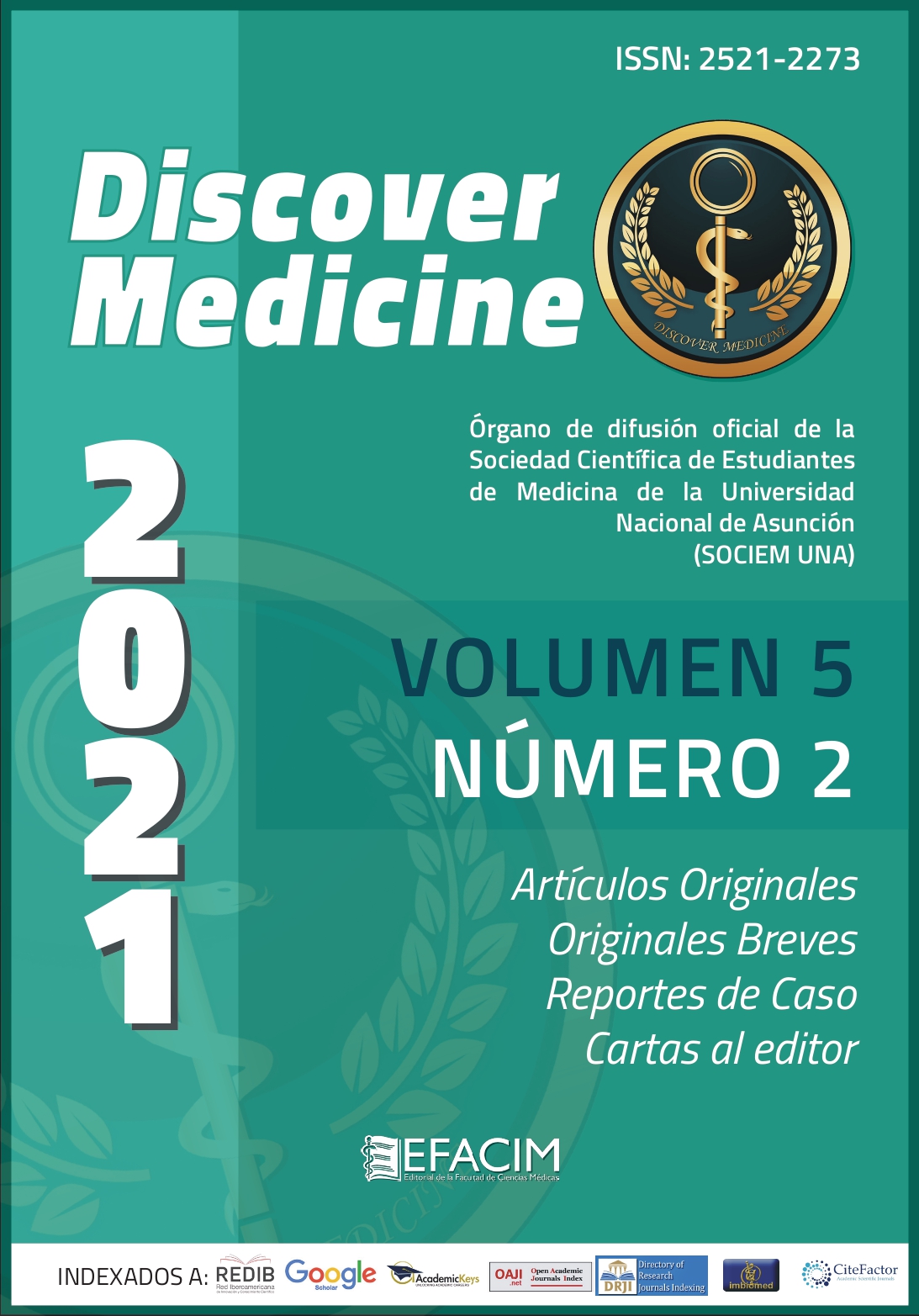Abstract
Introduction: Group B Streptococcus have been indicated in various infec- tious diseasea in newborn children and in other inflammatory processes. This group consists of microorganisms of frequent presentation in pregnant women. The aim was to determine the prevalence of group B streptococcus in pregnant women of the department of gynecology and obstetrics of the hospital of clinics of San Lorenzo-Paraguay in the first term of 2018.
Methods: Descriptive observational, cross-sectional study with non-proba- bilistic sampling. Data collecting was made by visits to archive that belongs to the department of gynecology and obstetrics of the Hospital de Clínicas in San Lorenzo. A form was completed with the described variables above from the patients clinical record for those patients who visited the department du- ring the study period. Obtained data was introduced to a Microsoft Excel 2013 file and was analyzed with the software Epi Info version 7.2.2.6.
Results: Of the total number of files included for this work (734), 46% were analyzed (338 women). 54% of the patients did not undergo the study, a percentage that corresponds to 396 women. Of the patients who underwent the study, 19%, which corresponds to 65 women, were GBS positive. 81% gave a negative result, (273 women).
Conclusion: It was possible to determine the prevalence of GBS in pregnant women who came to the department in the first semester of 2018. The high prevalence of pregnant women who did not undergo the study during preg- nancy was evidenced; however, the prevalence of carriers of the microorganism in the studied population justifies the resumption of the prenatal scree- ning methods in an attempt to achieve full coverage for pregnant women between 35 and 37 weeks.
Received: 06/13/2021. Accepted: 10/20/2021

This work is licensed under a Creative Commons Attribution-NonCommercial-NoDerivatives 4.0 International License.
Copyright (c) 2021 Alba Mariela Mieres Arzamendia, Nahir Montserrat Moyano Alonzo, Jorge Canese, Nancy Melgarejo Touchet
